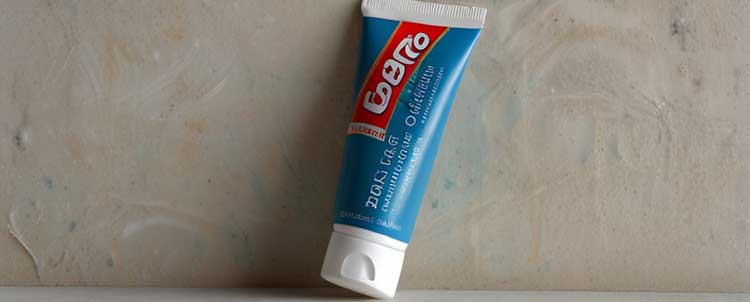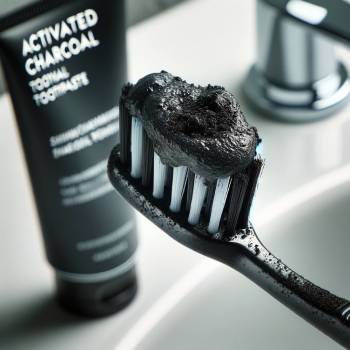Let’s chat about something super important that often gets overlooked in our daily routines – toothpaste. Yes, that little tube sitting on your bathroom sink has a bigger impact on your oral health than you might realize.
We use it every day, but do we really know what’s in it and what to avoid?
In this article, we’ll talk about the ones you should steer clear of. By the end, you’ll have a clear idea of what to look for (and what to avoid) the next time you’re shopping for toothpaste.
Why Should You Care About Toothpaste Ingredients?

You might wonder why we need to be so picky about toothpaste. After all, isn’t all toothpaste just minty goo that cleans your teeth? Well, not quite.
The ingredients in toothpaste can affect not only your oral health but your overall health as well. Some common ingredients can cause allergies, irritation, or even long-term health issues.
Knowing what to avoid can help you make better choices for you and your family.
Harmful Ingredients To Avoid
- Sodium Lauryl Sulfate (SLS)
Sodium Lauryl Sulfate is a detergent and surfactant found in many personal care products, including toothpaste. Its main job is to create foam, giving you that satisfying bubbly feeling when you brush.
However, SLS can be quite harsh, potentially causing irritation in your mouth and gums. Some people experience canker sores and dry mouth as a result of using toothpaste with SLS.
If you notice these symptoms, switching to an SLS-free toothpaste might bring relief.
- Triclosan
Triclosan is an antibacterial agent added to some toothpastes to help fight plaque and gingivitis. While that sounds great, triclosan has been linked to various health concerns, including hormone disruption and antibiotic resistance.
The FDA banned triclosan in hand soaps, but it can still be found in some toothpaste brands. It’s best to avoid this ingredient to minimize potential risks.
- Artificial Sweeteners and Flavors
Many toothpastes contain artificial sweeteners like saccharin and aspartame to make them taste better. While these ingredients might not harm everyone, some people prefer to avoid them due to potential health concerns and allergies.
Similarly, artificial flavors can cause reactions in sensitive individuals. Opting for natural sweeteners and flavors can be a safer and more pleasant choice.
- Propylene Glycol
Propylene glycol is a common ingredient in toothpaste, acting as a humectant to keep the paste moist. It’s also found in antifreeze, which might give you pause.
While the amounts in toothpaste are considered safe by regulators, some people prefer to avoid it due to potential skin, eye, and respiratory irritation. If you’re looking for a more natural alternative, there are plenty of options that don’t include propylene glycol.
- Diethanolamine (DEA)
Diethanolamine is a foaming agent that can be found in some toothpastes. It has been linked to cancer in lab animals and can react with other ingredients to form nitrosamines, which are known carcinogens.
While the risk to humans is still being studied, many experts recommend avoiding DEA to be on the safe side.
Toothpaste Ingredients That Might Surprise You
- Microbeads
Microbeads are tiny plastic particles that were once popular in many personal care products for their exfoliating properties. Some toothpaste brands used them to create a scrubbing effect.
However, microbeads are terrible for the environment, as they don’t biodegrade and can end up in waterways, harming marine life. Many countries have banned them, but it’s still worth checking labels to ensure your toothpaste is microbead-free.
- Carrageenan
Carrageenan is derived from seaweed and is used as a thickening agent in toothpaste. While it’s generally considered safe, some studies have suggested it might cause inflammation or gastrointestinal issues in sensitive individuals.
If you have a history of digestive problems, you might want to steer clear of toothpaste containing carrageenan.
- Titanium Dioxide
Titanium dioxide is used in toothpaste to give it a bright white color. While it might make your toothpaste look more appealing, there are concerns about its safety.
Some studies have suggested that titanium dioxide nanoparticles can penetrate tissues and cause oxidative stress and inflammation. Though more research is needed, some people choose to avoid it as a precaution.
Natural Alternatives To Consider
- Baking Soda

Baking soda is a fantastic natural alternative that has been used for centuries to clean teeth.
It’s mildly abrasive, which helps to remove plaque and stains without damaging your enamel.
Plus, it has natural whitening properties and neutralizes acids in your mouth, promoting a healthier oral environment.
- Coconut Oil
Coconut oil has gained popularity for oil pulling, an ancient practice that involves swishing oil in your mouth to remove bacteria and improve oral health.
You can also find toothpaste that incorporates coconut oil for its antibacterial and anti-inflammatory properties. It’s a great option if you’re looking for a natural and gentle toothpaste.
- Activated Charcoal
Activated charcoal is another trendy natural ingredient known for its ability to remove stains and whiten teeth.
However, it’s quite abrasive, so it’s best used occasionally rather than as your daily toothpaste.
Look for products that combine activated charcoal with other gentler ingredients to balance its effects.
- Aloe Vera
Aloe vera is well-known for its soothing and healing properties. Some toothpaste brands incorporate aloe vera to help soothe gums and reduce inflammation. It’s a gentle option that’s suitable for people with sensitive teeth and gums.
- Essential Oils
Essential oils like peppermint, tea tree, and eucalyptus are often used in natural toothpaste for their antibacterial and refreshing properties. They can provide a pleasant taste and help keep your mouth feeling clean and fresh. Just make sure the toothpaste is properly formulated, as essential oils can be potent.
How To Choose The Right Toothpaste?

- Read The Labels
The most important step in choosing the right toothpaste is to read the labels carefully. Look for ingredients that you recognize and trust. If you see any of the harmful ingredients we’ve discussed, it’s best to put that tube back on the shelf.
- Consider Your Specific Needs
Everyone’s oral health needs are different. Some people need extra fluoride for cavity protection, while others need a gentle formula for sensitive teeth. Think about what you need from your toothpaste and choose a product that meets those needs without compromising on safety.
- Consult Your Dentist
Your dentist is a great resource for personalized advice on toothpaste. They can recommend specific brands and formulas based on your dental history and current oral health status.
Don’t hesitate to ask for their opinion if you’re unsure about which toothpaste to choose.
- Look for Certifications
Certifications from reputable organizations can give you peace of mind that a toothpaste meets certain safety and quality standards. Look for seals of approval from dental associations or organic certifications if you’re opting for natural products.
Common Misconceptions About Toothpaste

- All Toothpaste Is The Same
One of the biggest misconceptions is that all toothpaste is essentially the same. This couldn’t be further from the truth. The ingredients, quality, and purpose of different toothpastes can vary widely. Understanding these differences is key to choosing the right product for your needs.
- More Foam Means Cleaner Teeth
Many people associate a lot of foam with better cleaning power. However, foam is often created by SLS, which, as we’ve discussed, can be irritating. A toothpaste that foams less can still be just as effective, if not more so, at cleaning your teeth.
- Natural Toothpaste Isn’t Effective
There’s a common belief that natural toothpaste doesn’t work as well as conventional ones. While it’s true that some natural products might not contain fluoride, many are formulated to be just as effective at cleaning teeth and promoting oral health.
You can find natural toothpastes that offer a full range of benefits, including cavity protection and whitening.
DIY Toothpaste: A Safe Alternative?
Some people prefer to make their own toothpaste to have complete control over the ingredients. If you’re interested in trying DIY toothpaste, here’s a simple and safe recipe to get you started:
Ingredients:
- 2 tablespoons of baking soda
- 2 tablespoons of coconut oil
- 10-15 drops of peppermint essential oil (optional)
Instructions:
- Mix the baking soda and coconut oil in a small bowl until you get a smooth paste.
- Add the essential oil drops and mix well.
- Store the paste in a small, airtight container.
This DIY toothpaste is free from harmful chemicals and can provide a gentle and effective way to clean your teeth. However, it’s important to note that homemade toothpaste usually lacks fluoride, so make sure you’re getting adequate fluoride from other sources if you choose this route.
Wrapping Up
Navigating the toothpaste aisle can be overwhelming with so many options and ingredients to consider. But by knowing which ingredients to avoid, you can make more informed choices that benefit your oral and overall health.
Stick to products that steer clear of harmful additives like SLS, triclosan, artificial sweeteners, and other questionable ingredients. Opt for natural alternatives and always read the labels to ensure you’re getting the best for you and your family.
Remember, your oral health is a crucial part of your overall well-being, and choosing the right toothpaste is a small but significant step towards maintaining a healthy smile.
So next time you’re shopping for toothpaste, take a moment to check the ingredients and make a choice that you can feel good about.
Happy brushing!
